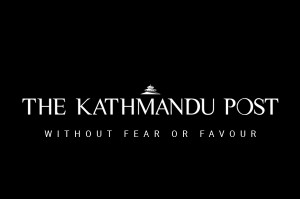Valley
Encroachment of Kathmandu Valley’s rivers and poor drainage worsen inundation
Experts say improving the drainage system is the only way to address the problem of annual floodings.
Anup Ojha
On Friday evening it rained heavily for two hours in the Kapan area on the northern rim of Kathmandu Valley. The Kapan-Tarkari Bazaar-Sat Tale road section instantly turned into a river flooding the ground floors of most of the houses on both sides of the road. At the Tarkari Bazaar (vegetable market) the shops were waterlogged and vegetables were floating on water.
The waterlogging was so intense that the locals and shopkeepers were confined to their homes and shops for hours and even the 48 police personnel from the Metropolitan Police Circle, Kapan who were supposed to patrol the area at night could not go out to work.
“The rainwater was around four feet above the road in front of our office and our entire compound was waterlogged. We all were stuck inside for nearly three hours,” said Police Inspector Bhagawati Timilsena, also the chief of the circle.
Eight police personnel deployed at the metropolitan police beat under the circle at nearby Dhalke Dhara spent the night fearing being swept away by the swollen Dhobikhola river, according to Timilsena.
Locals say flooding and waterlogging is an annual problem during the rainy season at Kapan but the authorities concerned have not done anything to resolve it.
“When it rains Kapan roads turn into rivers because there is no proper drainage system. As the land mafia have encroached the Khahare Khola stream and built houses, the inundation problem has worsened. The stream also brings debris of mud and stones making cleanup work difficult,” said Raj Rai, 32, who runs a furniture shop at Kapan. Rai said rainwater entered his shop and caused damage worth Rs 150,000.
Nawaraj Bhattarai, ward-10 chairman of Budhanilkantha Municipality, under which the Kapan area falls, said the flooding and inundation problem is over a decade old.
“The problem is due to rapid urbanization and encroachment of rivers,” said Bhattarai. He said the municipality in collaboration with the Kathmandu Valley Development Authority is working to install a box culvert along a 2.2 km stretch from Sat Tale to Ani Gumba of the road, which used to be a stream.
Kapan is not alone when it comes to inundation in Kathmandu. Last week, the flood-swollen Dhobikhola river entered settlements in Anamnagar. The Bagmati and Bishnumati rivers threaten the riverside squatter settlements every year. Urban planners say the recent indundations are due to lack of proper drainage system and encroachment of river banks.
“Kathmandu’s rivers have narrowed due to encroachment so they are becoming more dangerous during the monsoon,” said Suman Meher Shrestha, an urban planner.
The flooding of the Hanumante River which originates from the north-west of the Kathmandu Valley has been making news every year during the monsoon. The river enters houses, schools and hospitals in Bhaktapur causing huge losses.
Similarly, drain overflowing in Kwalku area of Patan and waterlogging in the streets at Kumaripati, Ekantakuna, Lagankhel and Putalisadak are a perennial problem during the monsoon causing inconvenience for pedestrians and motorists.
Bhai Kaji Tiwari, former chief of the Kathmandu Valley Development Authority said it is not that rivers are entering settlements but humans have encroached upon rivers instead. “Until 1990, there was a government rule that human settlement should not be built within 100 meters on both sides of the rivers, but after the restoration of democracy people started encroaching upon the river banks,” said Tiwari.
“Inundation is getting severe also because the city areas are concretised, so the soil cannot absorb the rainwater,” said Tiwari.
Urban planners say with more rains more areas in Kathmandu are at risk of inundation.
“Kathmandu should learn from last month’s flood devastations in Melamchi and Manang, because Kathmandu Valley has many rivers and streams but all have been encroached by the land mafia. These rivers have been narrowed and cannot withstand the monsoon waters,” said Shrestha.
Shrestha quoting centenarian Satya Mohan Joshi said, “Until 50 years ago Kathmandu would not have inundation or flooding problems even after five days of continuous rains because there were no settlements in the floodplains, and there were ponds that stored the rainwaters.”
He said the only solution to the growing inundation problem in the city is to improve the drainage system.




 8.12°C Kathmandu
8.12°C Kathmandu.jpg)









%20(1).jpg&w=300&height=200)

